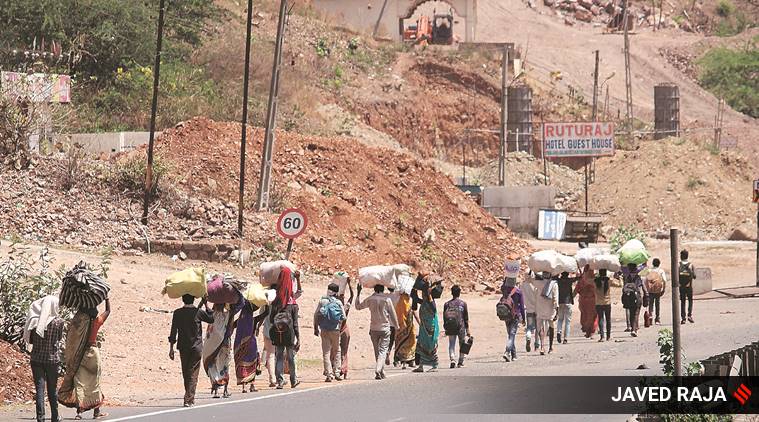Gujarat gears up, adds Vadodara, Surat, Rajkot and Bhavnagar to hotspot list
Principal Health Secretary Jayanti Ravi said, “We took this step proactively two days ago for districts that are reporting higher numbers of cases, or showing signs of clustering.”
 In a bid to make up for the acute shortage medical professionals in the state, a resolution was passed on Tuesday to allow ad hoc recruitment of practising and non-practising medical professionals to government hospitals and medical colleges attached to those.
In a bid to make up for the acute shortage medical professionals in the state, a resolution was passed on Tuesday to allow ad hoc recruitment of practising and non-practising medical professionals to government hospitals and medical colleges attached to those.
After the Union health ministry identified Ahmedabad as one of the 10 hotspots across the country to ramp up testing, the Gujarat health department on Tuesday announced that as a “preemptive and proactive” move, it will consider Rajkot, Surat, Vadodara and Bhavnagar districts also as hotspots. Till Tuesday, the state reported 74 positive cases.
Of the three new cases, one is a 32-year-old woman from Khoraj in Gandhinagar, whose 34-year-old husband tested positive on March 29. He had a travel history to Mumbai and the wife purportedly contracted the infection via local transmission. Another 55-year-old man in Ahmedabad and a 28-year-old man in Surat were also reportedly infected via local transmission.
Principal Health Secretary Jayanti Ravi said, “We took this step proactively two days ago for districts that are reporting higher numbers of cases, or showing signs of clustering.” With the hotspot classification, it does not necessarily mean increased testing but rather the strategy in these areas will include condoning off areas with high population density, for example Jangleshwar area in Rajkot from where the first positive case in the state was reported, said Ravi. Another strategy will be to increase surveillance in these areas.

On Tuesday, 124 samples were taken for testing from across the state, while a total of 1,520 samples were tested so far.
Surveillance
Nearly 6.15 crore were surveyed physically or over phone till now, for which medical college students and nursing college students were roped in among others, Ravi said.
Speaking to this paper, Dr Prakash Vaghela, additional director in charge of public health, state health department, said that the surveillance can be classified as active surveillance and passive surveillance.
 Migrant workers in Gujarat continue to return to their native places on foot. (Express photo by Javed Raja)
Migrant workers in Gujarat continue to return to their native places on foot. (Express photo by Javed Raja)
Active surveillance includes door-to-door visits by health workers as well as telephonic calls. Passive surveillance includes reporting of those showing influenza-like symptoms or with severe acute respiratory infections (SARI) by private sector doctors through a mobile application DrTeCHO or by ASHA workers through TeCHO app, as well as of close contacts of a positive patient.
Equipment
Apart from health workers, the state has decided to provide triple-layered masks to ambulance workers, police personnel as well as those working in food and civil supplies and in PDS shops. As per Ravi, with over 31 lakh of these masks, the state has “more than sufficient stock”. The state has procured 9,500 personal protection equipment (PPE) kits, and more than two lakh N-95 masks, Ravi said.
Ad hoc recruitment
In a bid to make up for the acute shortage medical professionals in the state, a resolution was passed on Tuesday to allow ad hoc recruitment of practising and non-practising medical professionals to government hospitals and medical colleges attached to those. This resolution shall be applicable in the future too, though this has been brought into effect at present to deal with the COVID-19 outbreak. It was also announced on Tuesday that government medical professionals or health workers who were due to retire in March, April or May, shall be given an extension until June.
Here’s a quick Coronavirus guide from Express Explained to keep you updated: What can cause a COVID-19 patient to relapse after recovery? | COVID-19 lockdown has cleaned up the air, but this may not be good news. Here’s why | Can alternative medicine work against the coronavirus? | A five-minute test for COVID-19 has been readied, India may get it too | How India is building up defence during lockdown | Why only a fraction of those with coronavirus suffer acutely | How do healthcare workers protect themselves from getting infected? | What does it take to set up isolation wards?







